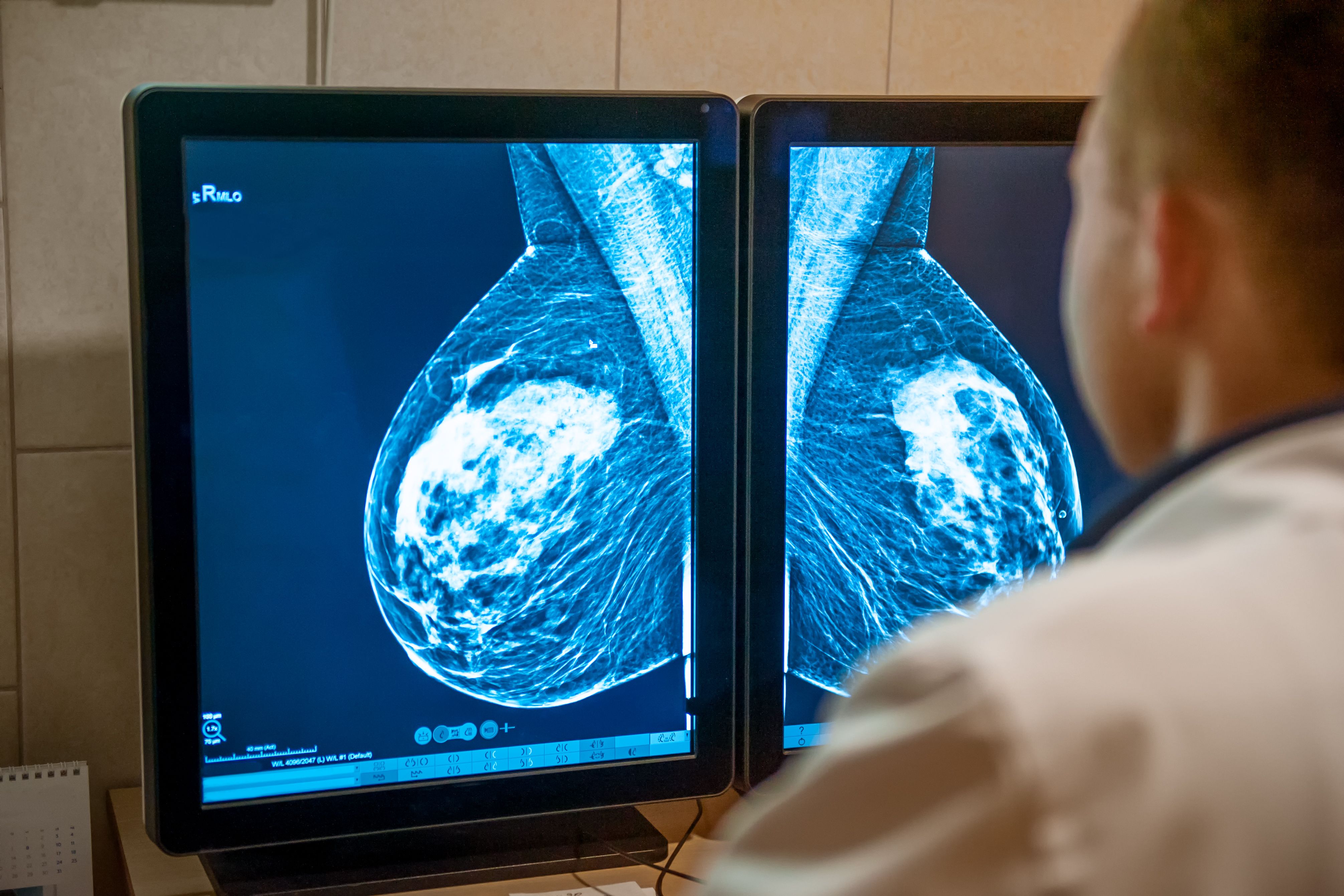News
Article
Risks, Benefits of Bilateral Mastectomy for Unilateral Breast Cancer
Author(s):
Despite a significant increase in women with unilateral breast cancer who received a bilateral mastectomy, this study found no survival benefit compared with other treatment options. Although removing the unaffected breast reduces the risk of developing cancer in the other breast, results did not show decreased risk of death from breast cancer.
Despite a significant increase in women with unilateral breast cancer who received a bilateral mastectomy, this study found no survival benefit compared with other treatment options. | Image Credit: okrasiuk - stock.adobe.com

Many patients with breast cancer in only 1 breast, including ductal carcinoma in situ (DCIS), opt for bilateral mastectomy as their initial treatment, according to a study published in JAMA Oncology.1 Bilateral mastectomy is often appealing to patients because it is known to reduce the risk of a second primary cancer with the hope that risk of mortality will decrease.
Removal of the unaffected breast reduces the incidence of second primary cancers, but current studies do not show a decline in breast cancer mortality. Recent data show the risk of contralateral breast cancer is approximately 0.4% per year for the 20 years post diagnosis.
The rise in bilateral mastectomies is complex.2 Factors considered in this decision include more bilateral cancers found with MRI, increased BRCA testing, improved risk models, patient fear, body image concerns, reconstruction options, and surgeon/media influence.
Bilateral mastectomies are major surgeries often leading to longer hospital stays, increased blood transfusions, and a higher likelihood of requiring additional surgery.3 Although unilateral breast reconstruction carries its own risks, these challenges may be amplified in patients undergoing dual breast reconstruction.
The benefit of removing the unaffected breast through contralateral mastectomy after a breast cancer diagnosis depends on the individual's likelihood of developing cancer in the other breast.4 This risk is generally greater for younger women. To support informed decision-making, it is crucial to offer patients tailored information about their specific risk factors when considering contralateral prophylactic mastectomy.
Methods
In a large cohort study approved by the Women’s College Hospital Ethics Board from Canada, the Surveillance, Epidemiology, and End Results program registry database was utilized to identify women with unilateral breast cancer diagnosed between 2000 and 2019.1 The study adhered to the Strengthening the Reporting of Observational Studies in Epidemiology reporting guideline.
Follow-up among cohorts lasted for 20 years for contralateral breast cancer and for breast cancer–related mortality. An analysis compared the 20-year cumulative risk of breast cancer mortality for women treated with lumpectomy vs unilateral mastectomy vs bilateral mastectomy. Researchers evaluated the data between October 2023 and February 2024.
Results
The study included 661,270 eligible women with breast cancer at an average age of 58.7 years. There were 564,062 cases of invasive breast cancer (85.3%) and 97,208 cases of DCIS (14.7%).
Most of the cohort underwent breast-conserving surgery (70.6%) while others had a unilateral mastectomy (23.4%) and a bilateral mastectomy (6%).
After matching patients with bilateral mastectomy to generate 3 surgical groups, there was 36,028 women in each of the 3 treatment groups. During the 20-year follow-up period, 766 patients (2.1%) in the lumpectomy group had contralateral invasive breast cancer, 728 patients (2%) in the unilateral mastectomy group had contralateral cancer, and 97 patients (0.3%) in the bilateral mastectomy group had contralateral breast cancer.
The 20-year cumulative incidence of contralateral invasive breast cancer was 6.9% (95% CI, 6.1%-7.9%) in the lumpectomy and unilateral mastectomy groups. Also in these groups, the cumulative breast cancer mortality at 15 years was 32.1% for those who developed contralateral cancer and 14.5% for those who did not (HR, 4.0; 95% CI, 3.52-4.54, using contralateral breast cancer as a time-dependent covariate).
However, the HR was higher for women treated for DCIS (HR, 10.3; 95% CI, 5.17-20.49) compared with women treated for invasive cancer (HR, 4.04; 95% CI, 3.54-4.6).
Deaths that were a result of breast cancer included 3077 (8.54%) women in the lumpectomy group, 3269 (9.07%) women in the unilateral mastectomy group, and 3062 (8.5%) women in the bilateral mastectomy group.
Limitations
The study's generalizability is limited because it lacked data on factors known to influence contralateral breast cancer risk, such as endocrine therapy use in estrogen receptor–positive patients, family history, and BRCA gene mutations. Additionally, factors like tamoxifen use, chemotherapy, other genetic variations, personalized risk assessments, or cancer screening history were not considered. There also may have been unmeasured confounders that did not capture score matching. Finally, the study only included patients with specific histological types (lobular, ductal, or mixed). Therefore, the findings apply only to these specific groups and cannot be automatically extended to the entire breast cancer population.
Based on the study, women with unilateral breast cancer should be advised that bilateral mastectomy greatly reduces the risk of a second cancer but does not affect mortality. The risk of contralateral breast cancer in women with unilateral primary breast cancer is substantial and remains relatively constant throughout a patient’s lifetime. The data allow us to estimate 69 in 1000 women with breast cancer will develop a contralateral cancer within 20 years of diagnosis. Patients treated with bilateral mastectomy for unilateral breast cancer experienced similar mortality rates as those treated with unilateral surgery.
References
1. Giannakeas V, Lim DW, Narod SA. Bilateral mastectomy and breast cancer mortality. JAMA Oncol. Published online July 25, 2024. doi:10.1001/jamaoncol.2024.2212
2. Lim DW, Metcalfe KA, Narod SA. Bilateral mastectomy in women with unilateral breast cancer: A review. JAMA Surg. 2021;156(6):569-576. doi:10.1001/jamasurg.2020.6664
3. Agarwal S, Pappas L, Agarwal J. Association between unilateral or bilateral mastectomy and breast cancer death in patients with unilateral ductal carcinoma. Cancer Manag Res. 2017;9:649-656. doi:10.2147/cmar.s148456
4. Giannakeas V, Lim DW, Narod SA. The risk of contralateral breast cancer: a SEER-based analysis. Br J Cancer. 2021;125(4):601-610. doi:10.1038/s41416-021-01417-7
Newsletter
Stay ahead of policy, cost, and value—subscribe to AJMC for expert insights at the intersection of clinical care and health economics.





